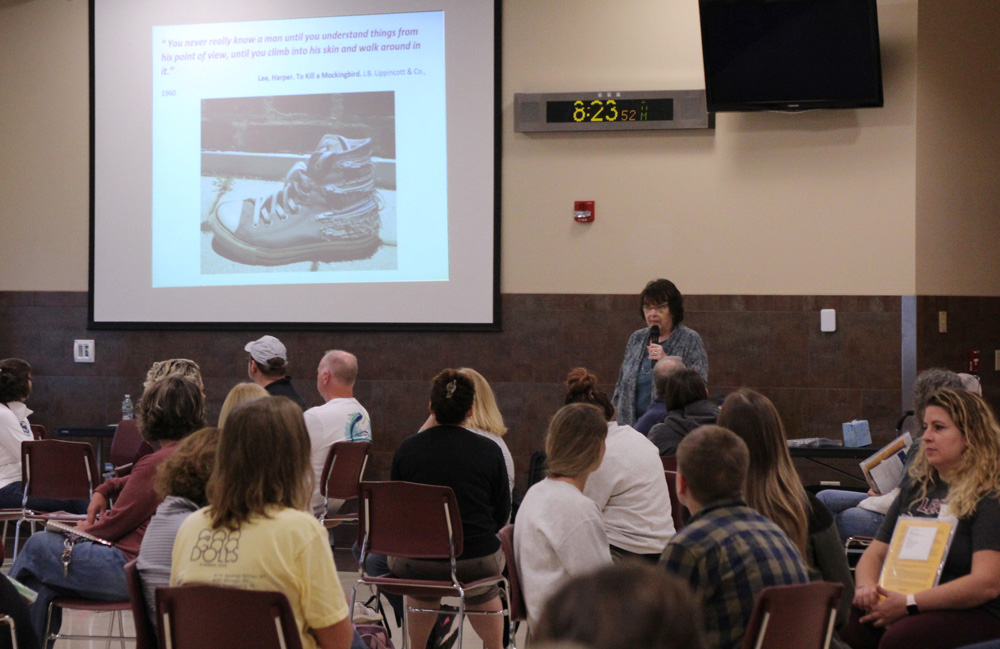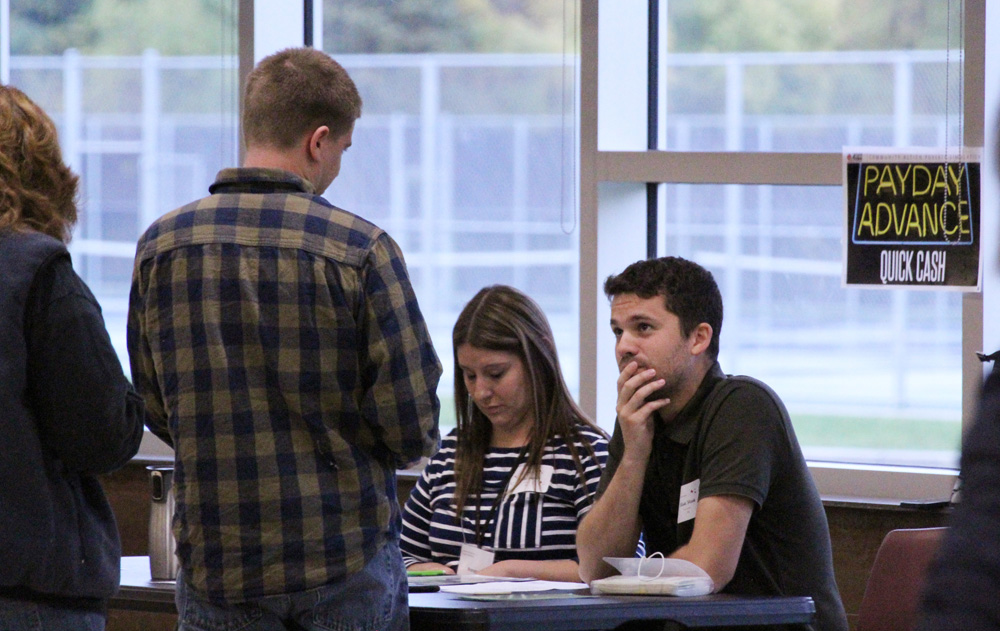Byron-Bergen staff participate in poverty simulation amid shifting demographics

On October 7, the Byron-Bergen CSD faculty participated in a professional development exercise designed to raise awareness of the added stress community members experience when living near the poverty line. The training was provided by the Genesee Region Teachers Center. The goal of the exercise was to simulate the challenges associated with poverty.
Juanita Henry, Director of the Genesee Region Teacher Center, and Pat Mullikan, Director of the Tri-County Teacher Center, opened the training by sharing national and regional statistics. In the U.S., over 17% of people under 18 years old live in poverty. In the Byron-Bergen community, the poverty rate has risen 10% since 2013.
“This learning experience brings both our Elementary and Jr./Sr. High School staff together to gain awareness of the changing challenges our students and families face,” said Byron-Bergen Superintendent Pat McGee. “Hopefully, the poverty simulation brought to light the empathy and compassion needed to meet our students and families where they are.”
The activity began with participants being assigned roles, either as members of a “family” or providing a community service. “Families” were given different resources and responsibilities and community agencies had set rules to follow with limited resources. Each “family” was tasked with balancing their financial resources, childcare, school, employment, and heath care. By the end of the “month,” some “family” groups faced eviction, “students” had begun skipping school, and trying to navigate social services had become a major point of stress.
“I liken it to working with the foster care system,” said Byron-Bergen Art Teacher Sandy Auer. “Working within a public system is frustrating. Sometimes you can’t get the help you need and deserve. Students are coming from that place of frustration.”
Part of the training is to provide a heightened awareness for the stress students may be under at home. In the simulation, some of the “students” took on major responsibilities in their family group, including providing childcare, shopping for food, and attempting to find employment.
While administering this simulation throughout the region, Henry noted that it is usually the stress level that teachers comment on most. “The expectation teachers sometimes have is that parents should be home helping their kids with homework and in reality, they’re holding the family together by making sure they have a house and food and the basics. They may feel education is very important but it’s not a priority on the needs list.”
“Children had roles and responsibility we would not necessarily associate with their age group,” said Mullikan during the debrief after the simulation. The participants agreed that expectations for adult supervision were completely different. Some children had very adult jobs when they got home and, while at school, students were preoccupied with stresses at home.
In closing, the group was asked, “As educators, what is our role? Are we going to add to that stress?”
“When a student doesn’t have their work done, because of circumstances they can’t control, a little empathy may mean they can enjoy coming to school knowing that they are not always in trouble,” said Henry.
“The poverty rate in this district is currently at 43%,” said McGee. “We are committed to providing an equitable education for all our students. To meet that commitment and support the whole child, our team needs to understand that education isn’t one-size-fits-all and consider the resources available to students outside of school hours.”
Provided information






